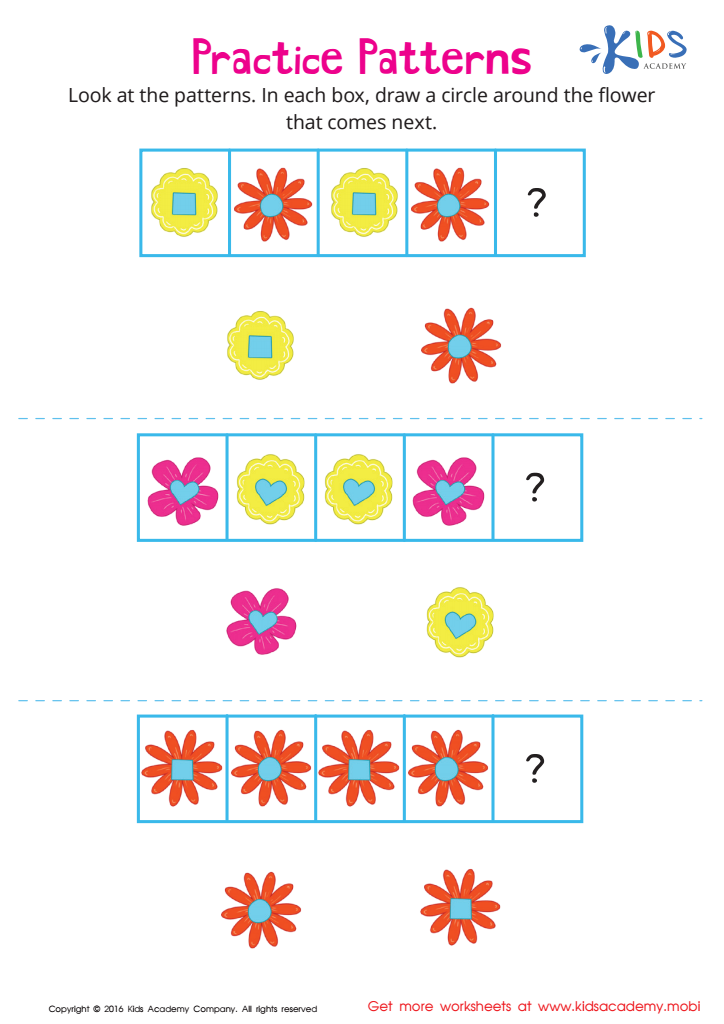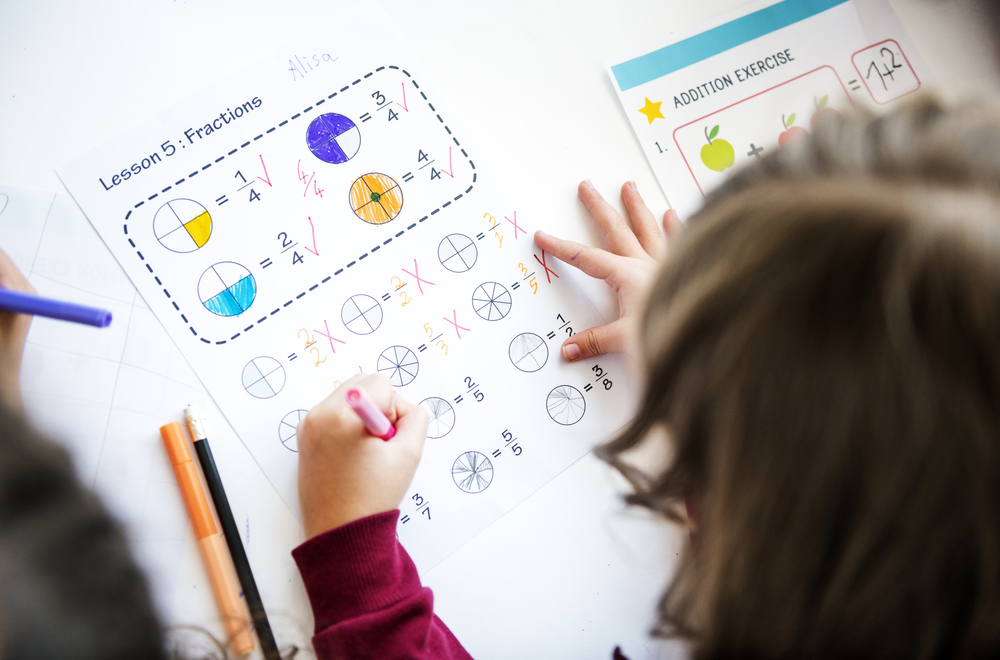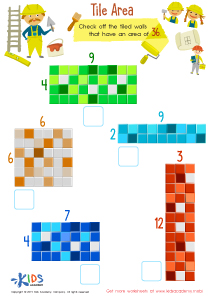Pattern recognition Normal Matching Worksheets for Ages 3-7
6 filtered results
-
From - To
Enhance your child's cognitive skills with our engaging Pattern Recognition Normal Matching Worksheets designed for ages 3-7! These interactive and colorful worksheets help young learners develop critical thinking and observational skills through fun pattern-matching activities. Kids will enjoy identifying, classifying, and completing patterns while honing their math and reasoning abilities. Perfect for preschool and early elementary educators, these worksheets promote independent learning, creativity, and problem-solving skills. Whether at home or in the classroom, our Pattern Recognition worksheets are an invaluable resource for foundational learning. Download now and watch your little ones thrive as they embark on an exciting journey of learning through play!
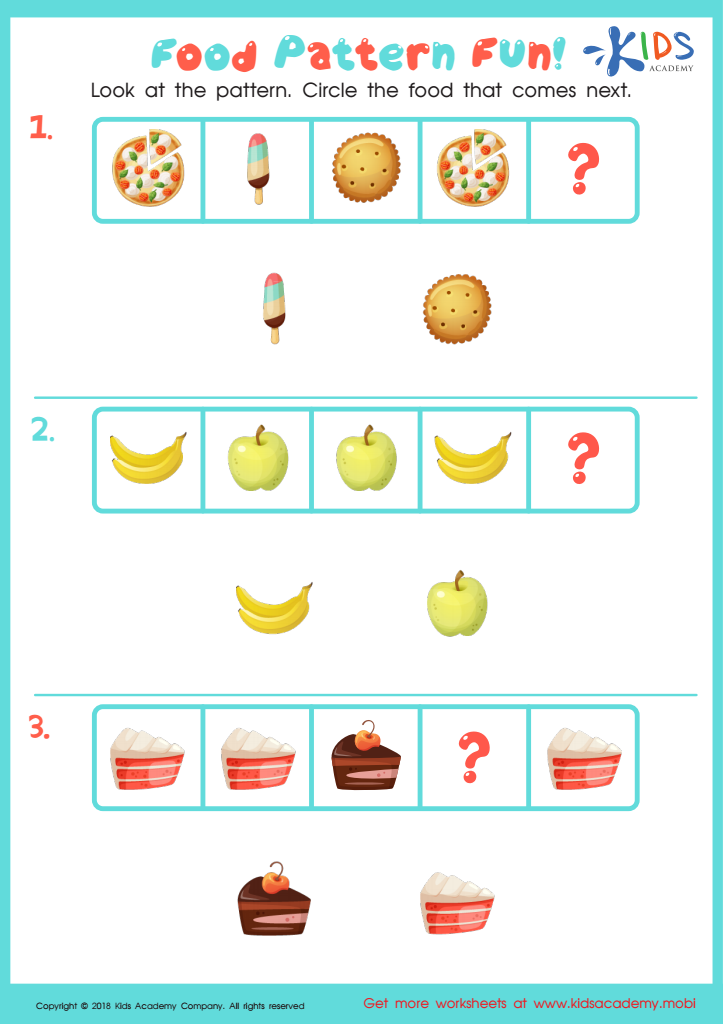

Food Pattern Fun Worksheet
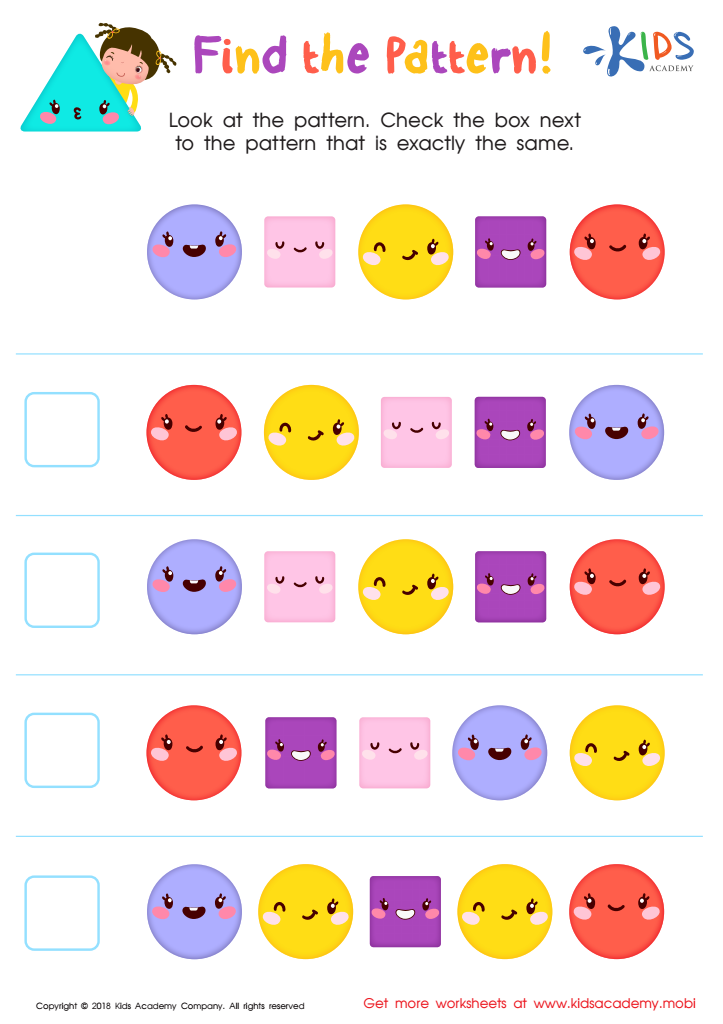

Find the Pattern Worksheet
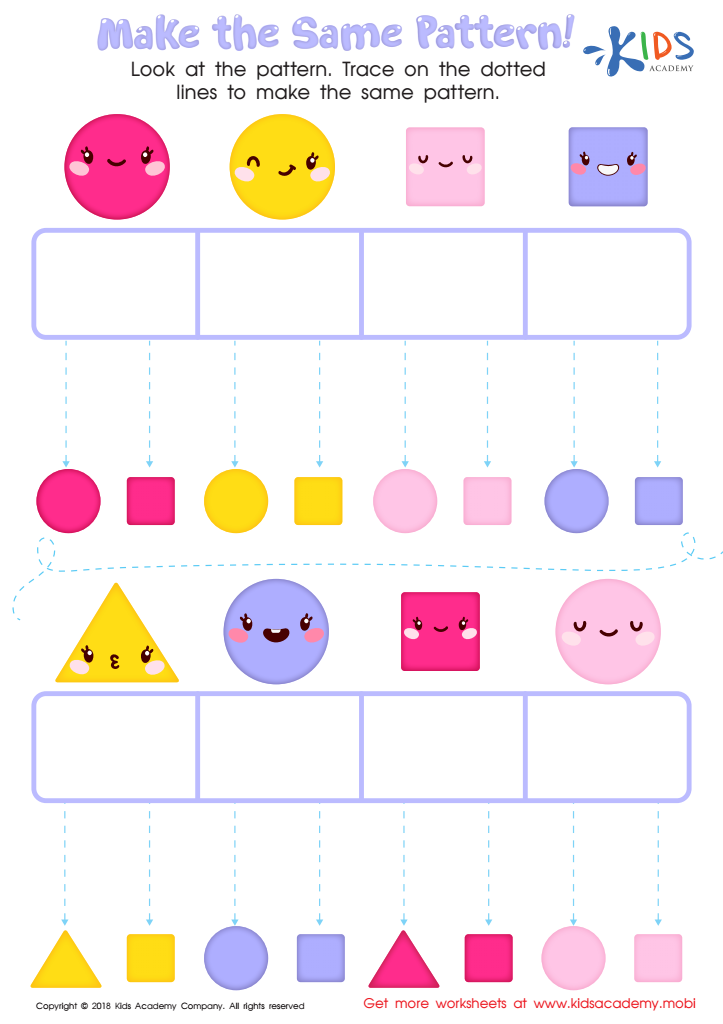

Make the Same Pattern Worksheet


Logic Game Sorting Worksheet
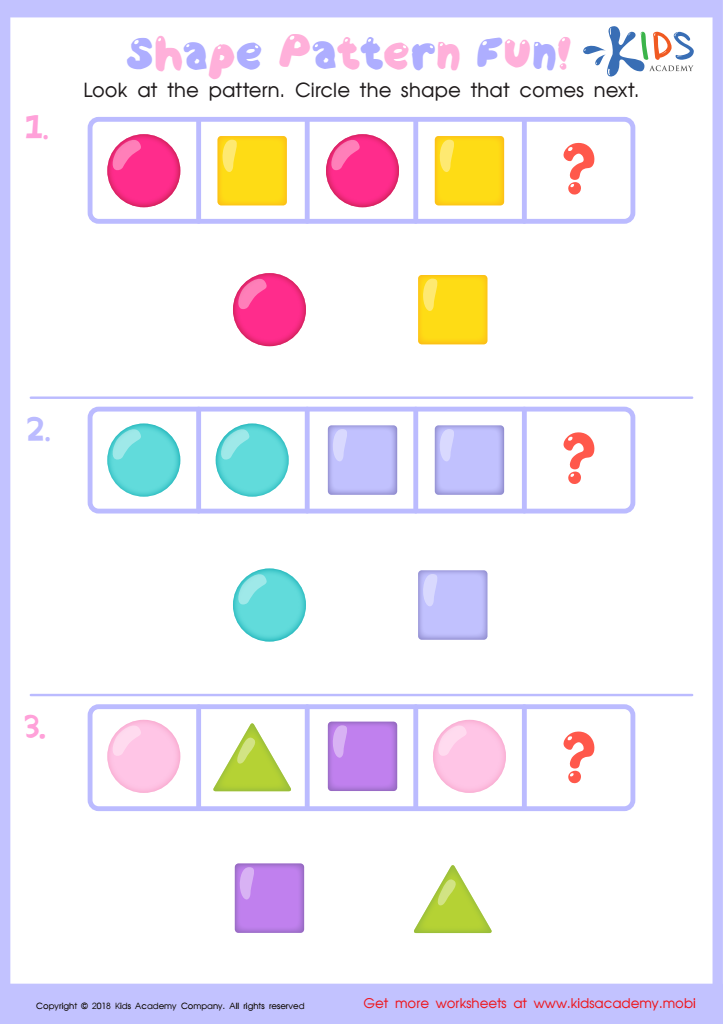

Shape Pattern Fun Worksheet
Pattern recognition and normal matching are critical cognitive skills for children ages 3-7. These abilities lay the groundwork for a child's understanding of the world, enhancing their problem-solving capabilities and logical thinking. When parents and teachers prioritize pattern recognition, they help children develop essential skills such as categorization and prediction, which are foundational for subjects like math, science, and literacy.
At this age, children are naturally curious and engaged in discovering relationships and regularities in their environment. Encouraging activities, such as puzzles, sorting games, and arts and crafts, not only stimulate creative thinking but also hone their ability to identify similarities and differences. This not only supports cognitive growth but also lays the groundwork for future learning.
Moreover, children's social skills benefit from pattern recognition, as they learn to interpret social cues and share experiences with peers. In classrooms, understanding patterns can lead to better collaboration and communication among students. By nurturing these skills early on, parents and teachers contribute to lifelong learning capacities, fostering a growth mindset that helps children approach challenges with confidence, curiosity, and resilience. Ultimately, instilling these competencies cultivates an environment primed for academic success and personal development.
 Assign to My Students
Assign to My Students
